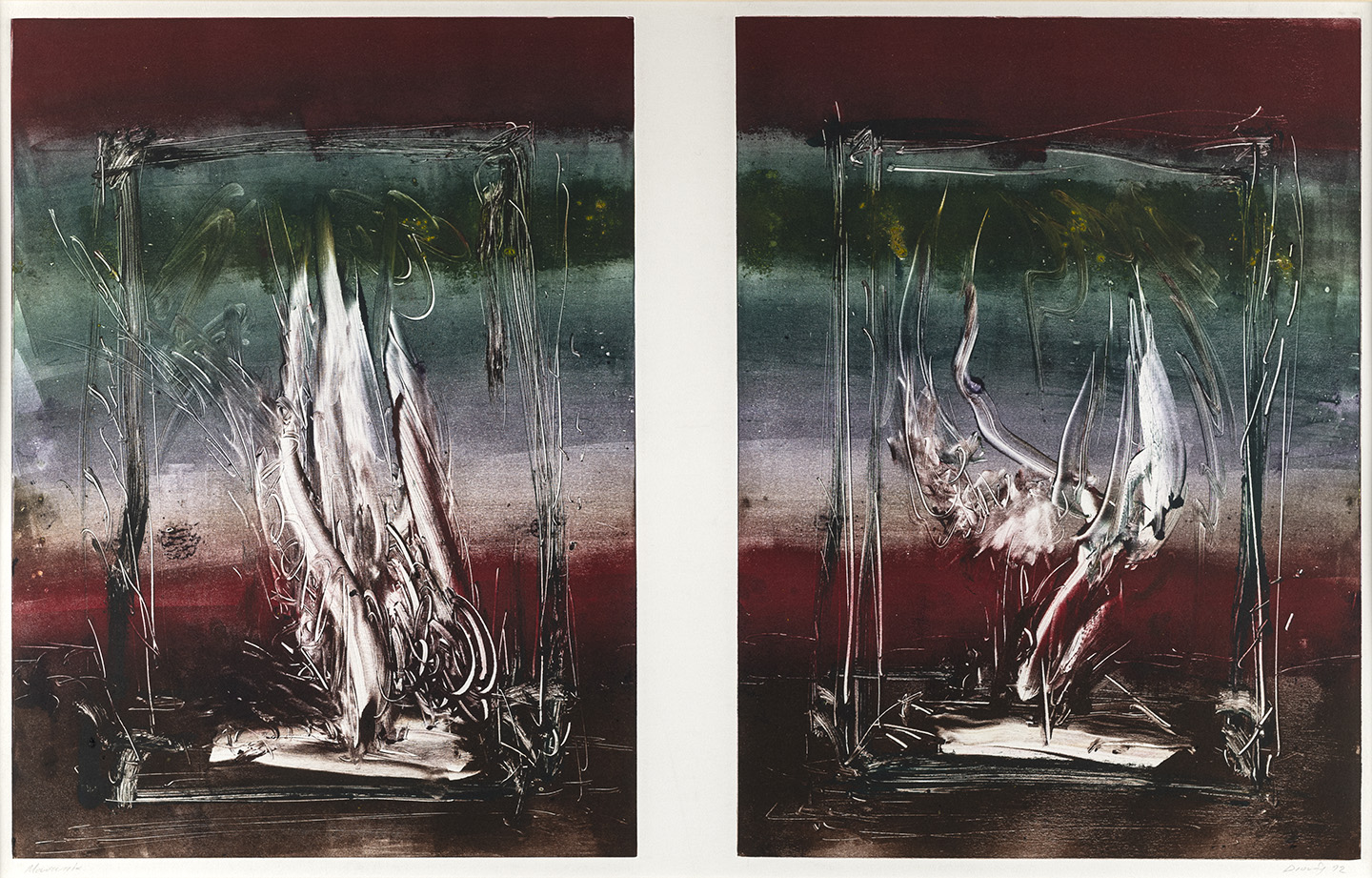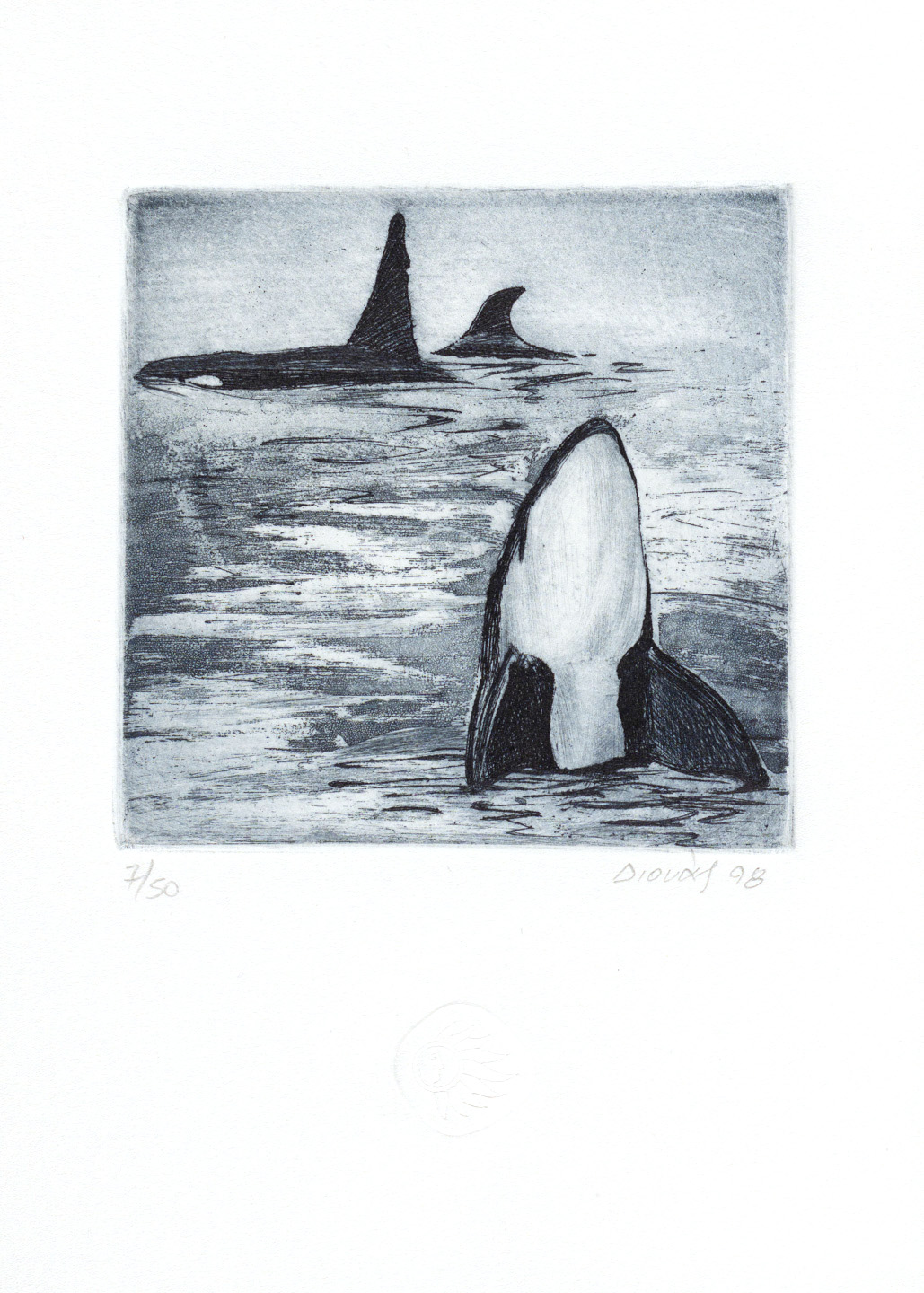Artworks

Dionas Vangelis
Vangelis Dionas was born in Piraeus in 1954. From 1971 to 1974 he worked close to the painter George Vogiatzis.
In 1981 he graduated with honors from ASKT, where he studied painting with teacher Giannis Moralis. At the same time, he attends with a scholarship from IKY the workshop of fresco painting and portable image technique with teacher Costas Xinopoulos.
He has collaborated in many editions of books with original engravings and has edited illustrations of poetry collections and magazines.
Since 1983 he has been teaching in secondary education as a teacher of Fine Arts.
THE PAINTING OF VANGELIS DIONA
FROM VISUAL REALITY TO ITS FREE INTERPRETATION
A student of Giannis Moralis at the Athens School of Fine Arts, Vangelis Dionas, who studied fresco painting and portable image technique with Costas Xinopoulos, has presented his efforts, both in group and solo exhibitions in Greece and abroad. But his painting seems to be moving in a personal direction that proves his close contact with all the quests of contemporary art. And there is no doubt, as evidenced by his older and newer works, that his painting has as its starting point the visual reality, without being limited to the simple transfer of its external elements. ‘He always aims and manages to convey in his efforts, a purely free and personal interpretation of it, which is distinguished for its persuasiveness and expressive wealth. "If you approach some of the most characteristic works of the last period, you can easily see the defining characteristics of your language painting. And these are expressionist touches and lyrical moods, calligraphic types and evocative general atmosphere.
What is noted without difficulty in the works of Dionas is a fruitful and personal composition of types of abstract landscape and in some cases an active expressionist mood that gives the painting energy and expressive pulse. Without being interested in preserving the known elements of his starting point, which is the visual reality, he manages to give sets that entice the viewer in their course and spirit. The insertion of linear calligraphic types used to organize and enrich the painting surface gives clarity and expressive completeness. By sometimes emphasizing a vertical axis in the middle or a horizontal one at various heights, or painting it acquires new expressive extensions. In another point, which the scholar can not miss, is that of the difference of expressive content in the large and small surfaces of Dionysus. And this difference is easily noticed if one gets closer to some of his most characteristic efforts.
On large surfaces with a preference for heavy black more colors, intensified by a few interferences of warm tones, a generally passive atmosphere and a pessimistic content prevail. Perhaps in this case one can speak of a kind of critical treatment of the modern reality of the big centers and especially of Athens, with the cloud, the polluted atmosphere and its all kinds of contradictions and conflicts, elements that tend to annihilate the individual. ‘Even the shapes themselves, usually with the same dimensions of width and height, come to emphasize the same impression and more clearly complete this climate of pessimism, introduced by heavy colors and the emphasis on horizontal general themes.
On smaller surfaces or using a combination of cool with warm colors and passive with active elements, they give a different tone and a more optimistic content to the painted surface. This is also emphasized by the preference of the vertical subjects, where from the very shape in which the height prevails in the width, and the ascending or moving elements in the center, come to give another voice to the painted surface. And this is more lyrical and poetic, inner and optimistic. A greater use of linear calligraphic types in this category of works, there is no doubt, that enriches the painting language of Dionas with new expressive extensions.
Painting contact with the conquests of this contemporary art of Dionysus, but based on purely personal quests, moves in the climate of European abstract expressionism, better known as Tasism. It is a painting that is distinguished for the imposition of color values and the expression of the artist's inner encounters with our time and our world. Without attempting to simply transfer known types and established elements, it is imposed on the viewer with the sincerity and security of his expressive language. With the immediacy of the color and the role of the space, the possibility of submission and the authenticity of its formulations.
August 1990
Chrysanthos Christou (professor of art history)









